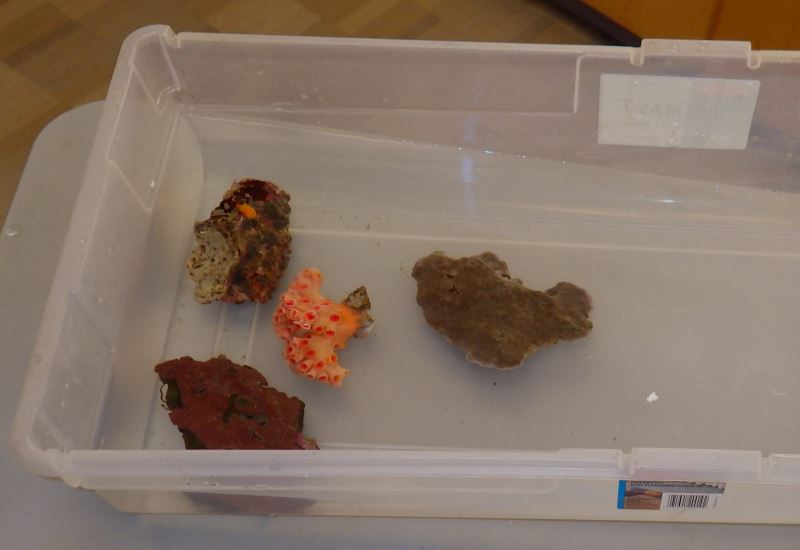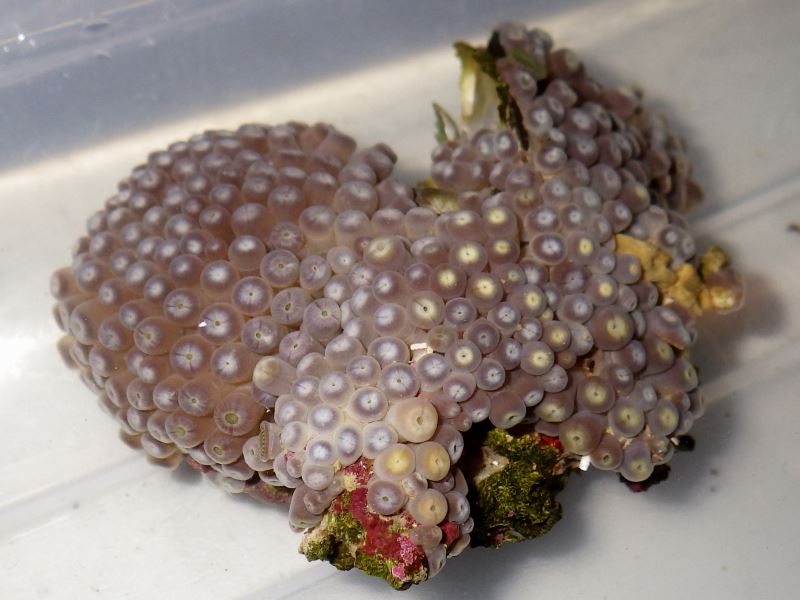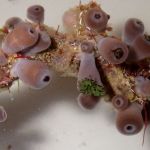The 2015 Coral Cutting Workshop by the Marine Aquarium Society of Toronto (MAST) was held last Wednesday on 11/February/2015 in the community center of the Armour Heights Public Library in Toronto. This is also the location of the regular MAST meetings.

I usually attend this workshop as it is a good chance to pick up several coral frags for a nominal fee. The corals for the coral cutting workshop are usually donated by local aquarium businesses and some of the MAST members.

Coral cutting, also known as fragging, is a way of propagating corals in captivity thus reducing the need to harvest these animals from the ocean for the aquarium trade. A lot like how someone can take cuttings of a house plant and plant them so they can set down roots and grow into new plants.
This is some skill that everybody in the reef aquarium hobby should learn eventually. The yearly coral cutting workshop is MAST’s way of educating its membership how to do it properly.

Various coral cutting paraphernalia: Bone clippers to cut hard coral skeleton. Scissors for cutting soft tissue. Various plugs to mount coral frags or cuttings on. Coral glue for gluing corals to the plugs or rock rubble.
In reality two slightly different phenomena are used to split what is perceived as one piece of coral into two, or even several separate ones.
Small polyped corals, and some of the not so small polyped ones, are usually colonies of many animals that have grown out of an ever growing piece of coral flesh. If a piece breaks off the colony repairs the damage and in fact the broken off piece goes on living, growing into a new colony.
Thus if one has a large piece of coral colony they can break or cut it into several pieces, attach the pieces to rocks or specifically designed ‘plugs’, place them in an established reef tank, and grow each piece into a new colony. This can be done with both hard and soft corals.

The other phenomenon is that even individual cnidarians can regenerate if they loose pieces of their body. Sometimes each piece can regenerate into an entire animal. Anemones regularly split into two when they grow too big. It is also possible to not wait for the animal to split when it decides to, but cut it into two halves vertically, taking care that each pieces should get about half the mouth and let each half regrow its missing parts and become a whole animal. This is a common way to cut anemones and large polyped corals including various mushroom anemones and some large polyped stony corals. Usually the halves are also mounted using glue.
I personally prefer gluing corals directly to the rockwork in my reef tank — less likely that disruptive animals, such as sea urchins, will knock them down. But it has the disadvantage that the coral cannot be moved easily later.

A coral frag from the Coral Cutting Workshop glued directly to the rockwork in my reef tank.
This frag was attached using a gel type super glue — a fairly common way to mount coral frags.
So far so good, but it is too early to tell if this frag is going to make it and grow.
By propagating corals at home and swapping coral frags marine aquarists can greatly reduce the need to collect coral specimens from the ocean, and reduce the environmental impact of our hobby. Also captive propagated coral frags are likely to be pieces of corals that have grown significantly in someone else’s reef tank, under captive conditions, thus they are pre-selected as likely candidates that will do well in other people’s home reef aquariums. They are also less likely to carry diseases or other unwanted organism with them.
Some people also make money by propagating corals in their home reef tanks and selling the pieces on the Internet.
Further Readings:
Propagating And Displaying Small Polyp Stony Corals.
The official website of the Marine Aquarium Society of Toronto.



